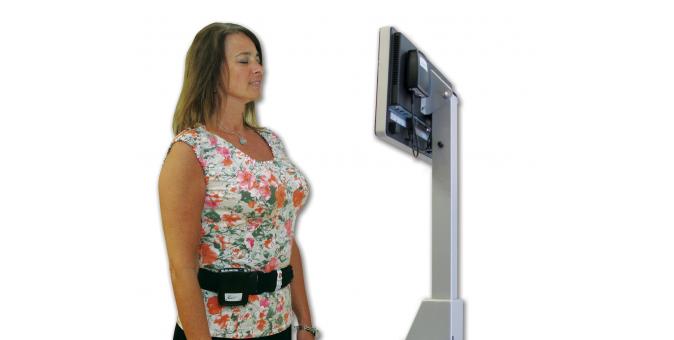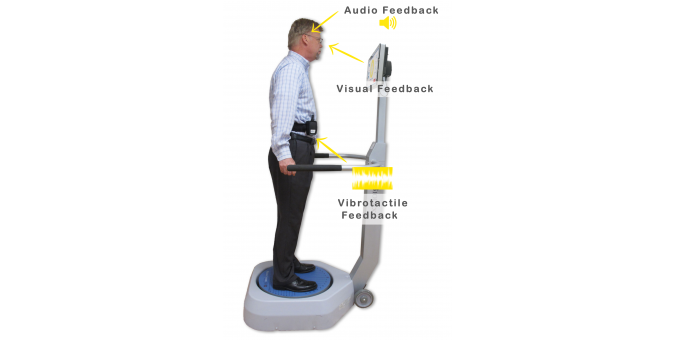VibroTactile System




You are expecting a call. You’re in a place where a ringing mobile phone is bad form so you put your phone on vibrate. When the phone “rings” – you don’t see it or hear it – but you know exactly where it is. That is Vibrotactile cueing.
For more information or a quote, please contact us on 0870 756 3090 or complete our online enquiry form.
Applications
- Vestibular therapies
- Balance anxieties from TBI
- Stroke
- Peripheral neuropathies
- Amputation
Features
Vibration cueing adds sensory feedback
Providing real time biofeedback during rehabilitation is essential for patients and clinicians. Once integrated with the Balance System™ SD or the portable BioSway™, the optional VibroTactile System offers an additional form of sensory feedback to help detect changes in postural sway. Using wireless technology, the tactile belt responds with a vibrating sensation when the patient sways outside the therapist-set parameters.
Adds sensory enrichment to therapy tasks
Real-time biofeedback is an important component of balance rehabilitation. Typically therapists cue patients with a tap or verbal command. VibroTactile cueing heightens the therapy process by adding a mechanised, reproducible sense and objective feedback. More pronounced than audio and visual feedback, vibrotactile cueing directly engages the motor learning system, enhancing neuroplasticity – essentially reducing falls.
Especially suited for evaluation and treatment of vestibular disorders
Vibrotactile cueing allows patients to safely receive positional feedback with their eyes closed. Patients with vestibular challenges are overly dependent on visual and somatosensory systems. To bring greater focus to the vestibular system during balance training, the visual sense needs to be eliminated.
Vestibular therapy includes balance training exercises which, when coupled with vibrotactile feedback as one of the interventions provided by physical therapists, has been shown to improve postural control.
For more information or a quote, please contact us on 0870 756 3090 or complete our online enquiry form.
References
1 Whitney SL, Alghwiri A, Alghadir A. (2015). Physical therapy for persons with vestibular disorders. Pubmed.gov, 61-8. doi: 10.1097/WCO.0000000000000162.
Specifications
Belt
- Dimension
- Small/Medium: 28"-36" (71-91 cm)
- Large/Extra Large: 36"-48" (91-122 cm)
Transmitter
- Voltage: 5v DC
- Current: 50 mA
- Auxiliary Ports: RS-232; USB
Receiver Box
- Voltage: 5v DC
- Current: 260 mA (when charging)
- Auxiliary Ports: USB (wired); LR-WPAN (wireless)
- Total Shipping Weight: 5 lb (2.3 kg)
Warranty:
- Two years parts and 1 year labour
![]()